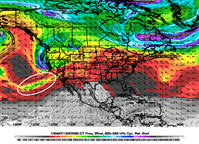Wesley Luginbyhl
EF4
I came across this analog for tomorrow, that I think matches up quite well. It actually helps rest some fears I have about tomorrow as it shows basically what the NAM has forecasted for Wednesday but still spit out some good tornadoes. The dew were higher for this day, but I still feel they are comparable in most aspects.
Be sure to check out some of the sounding from that day and the radar loop.
I give you May 7, 2002 - http://www.eas.slu.edu/CIPS/ANALOG/...=NAM212&fhr=F036&dt=2002050806&HH=-99&map=SVR
For old data from that day, use this - http://www2.mmm.ucar.edu/imagearchive/
Be sure to check out some of the sounding from that day and the radar loop.
I give you May 7, 2002 - http://www.eas.slu.edu/CIPS/ANALOG/...=NAM212&fhr=F036&dt=2002050806&HH=-99&map=SVR
For old data from that day, use this - http://www2.mmm.ucar.edu/imagearchive/











